Today, School Chaplain Reverend Creed offers the community a reflection during this Advent season.

Our Junior School Captains, Kaylee P and Alice X have carefully planned and organised a Junior School project especially for our Foundation to Year 6 students and staff. Recently at assembly, both school captains introduced their new project to the school community. The project is called The Tree of Encouragement. The tree is an opportunity for students and staff to share positive comments about others in our school community. For instance, one message on the tree read ‘Keep smiling when things get hard,’ another message read ‘Keep persisting,’ and a third message read, ‘Don’t forget to use a growth mindset.’ This is a terrific opportunity for Ormiston to sustain a positive culture and help others when they need a lift. We look forward to sharing more inspiring comments throughout Term 3 at Junior School Assembly.
You can see the tree in the image above.
Congratulations to Janice P of Year 5 who recently entered a number of international Art competitions. The competitions included:
2023 IYAC International Exhibition
2024 OCIYAC New York International Illustration Exhibition & Art Fair
These competitions are highly competitive, and Janice was awarded a recommendation letter for her wonderful work. We also wish her all the best for her future art endeavours.
I would like to wish our Ormiston families a restful weekend and would like to encourage all families to see the Secondary School Production the Little Mermaid.
Paul Donohue
Head of Junior School
This term, the Early Learning 4 Part Time children have been investigating maps using a bird’s eye perspective and Google Earth. Our inquiry project into Lines, Ways and Journeys has extended towards children’s understanding of the world and how it works using ICT and a mathematical lens. During a group time, Viaana stated that Planet Earth is “a really big map that tells you where all the countries are, it shows you where the land is and where the water is, and where all the tiny people live, because they look tiny when you’re in an aeroplane but when you go closer that gets bigger and bigger and turn into normal size”.
When sharing their wonderings about maps, and their purpose, the children responded with:
“A map tells you where to go when you don’t know where you are, if you get lost you can find your way home,” said Margot
“It shows you the way, it’s called Sat Nav” replied Holly
“It’s like a treasure map” connected Amber
“Navigation” summarised Ralph
Google Earth transformed the way children view maps globally and locally through geography and the introduction of terrain and keys. During a discussion, they were able to identify man-made infrastructure and natural elements.
Even though we’ve just begun, children’s engagement in maps and the globe has promoted their critical thinking and problem-solving skills, as they identify various features, interpret symbols, understand the scale and natural markers, and make connections between the diversity found in physical and cultural geography. We’re excited to see where our journey around the world may lead us.
Esther Wong
Early Learning 4 Teacher




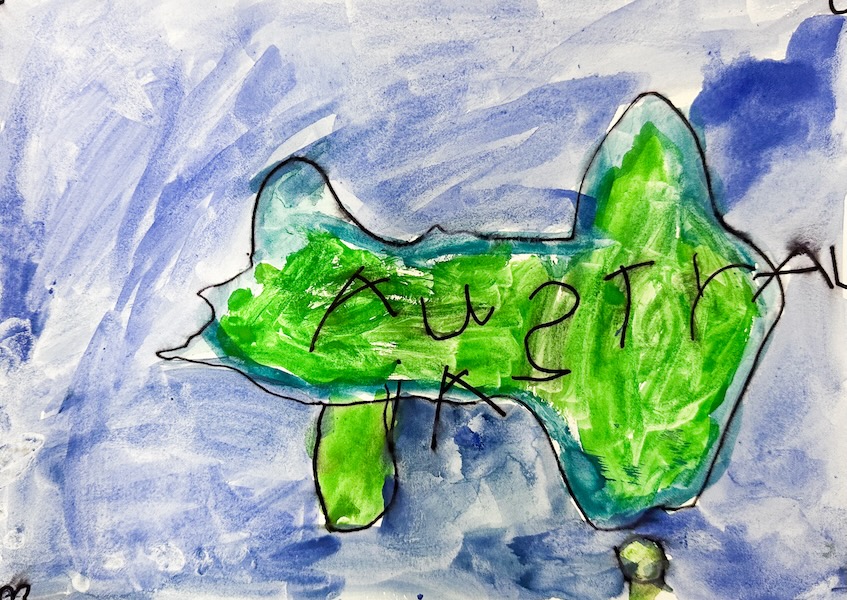

“Animals are an important part of Dreamtime and Creation stories for Aboriginal and Torres Strait Islander peoples and are considered very sacred within nations and clan groups.” Koorie Heritage Trust
In Early Learning 4 we shared the Gunnai Kurnai Dreamtime story Tiddalik and discovered the important role the eel played in helping to replenish the supply of water to Country. The children were curious about the eel and wondered if it was a snake or a fish. As communicators, the children had time and opportunity to record their first thinking and wonderings about eels and eel traps, through dialogue and drawing. As researchers and collaborators, we connected with the National Gallery of Victoria in an online workshop to make discoveries about eels and eel traps, learn about the life of an eel and how First Nations peoples have been weaving eel traps for thousands of years.
During the workshop many of the children’s wonderings were answered and the children made discoveries:
I found out that the eels cannot swim backwards and when eels move, they look like the letter ‘s.’ Giselle
I noticed that some eels are baby eels, and they can go through the little hole at the end. An eel looks like a lizard but it’s a type of fish. Roma
Eels can go in eel traps and then they can be eaten by people. Irena
An eel looks like a snake, but it is a type of fish. Eels can only swim forwards and not backwards. Sienna
The eel trap is for the eel to go in. They get in through the holes. The small eels can go through the traps, but the big eels get stuck. Veronica
The baby eel can swim out and the mummy eel cannot follow the baby one. Natasha
Eels can go through the hole. Alyssa
Eel traps are made from grass. Jasmine
You need to get the grass and dry it and then use it to make the eel trap. Isabelle
As critical thinkers, in the classroom, we explored Maree Clarke’s glass eel trap titled Ancestral Memory I (2019), Aunty Kim Wardin’s bronze 8-metre-long eel trap Iuk Bagurrk Gunga (2023) on display in the NGV moat, and Jackie Wirramanda’s Weaving on Country (2020).
As self-managers, the children worked with focus and concentration as they used drawing, painting, clay and dialogue to represent and express their reflections, observations and thinking about eels, eel traps, and weaving.
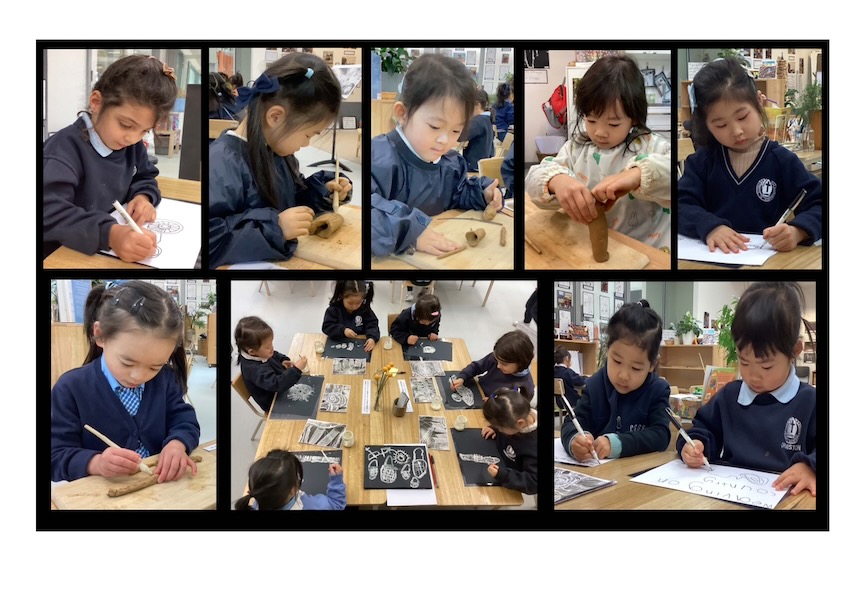
It is through these experiences that children develop dispositions for learning such as curiosity, creativity, imagination, and a sense of wonder and awe. As inquirers the children are being researchers and investigators and discovering that when they take the time to closely observe things from nature, they will notice things they have not previously seen. These experiences also provide opportunities for the children to express their learning, observations, and findings, through multiple languages such as drawing, dialogue, painting, and clay.
Angela Follacchio
Early Learning 4 Teacher
Small World Play encourages a child’s imagination, promotes creative thinking and extends knowledge and vocabulary about creatures and places in our world. Through small world play, Important language skills are developed as students used their imagination to tell stories and create role-play scenarios.
The Foundation EAL students acted out scenes from Julia Donaldson’s book, The Gruffalo. This enabled them to demonstrate their understanding of the story, vocabulary and their ability to sequence events from a text.
The intention of this learning experience was to explore the English Language. The Foundation EAL students listened to descriptions of scenes and characters from the story and recreated them using small world play items. The students then acted out the story before sequencing the events using images from the text.
This was a vocabulary rich experience and highlighted the students growing understanding while developing their confidence of the English language.
What also came out of the experience was the excitement of students from other year levels. When students of various ages came into the space, they all wanted to engage and play, act out the story and explore the dialogue and vocabulary. This highlights the importance of play for children of all ages and how the use of language through purposeful experiences is beneficial for students at any stage of their learning.
Melissa Donelly
Learning Diversity Leader & EAL Teacher


During the Semester One, the Year 3 Chinese Mainstream group has been diligently working on a class drama play based on the classic Children story ‘The Very Hungry Caterpillar’ by Eric Carle. The students learning focus included vocabulary and sentence structures related to occupations, the days of the week, food, essential verbs and adjectives.
The Year 3 Heritage class has been exploring one of the Four Greatest Inventions of ancient China—papermaking. The students studied a text on traditional Chinese papermaking and prepared a group presentation detailing the process, providing an insightful introduction to this historic craft skill.
This week both groups had the opportunity to present their learning and showcase their achievements to each other. The photos below highlight the Mainstream group of students presenting their play to the Heritage students. From creating their headbands to rehearsing their script in Chinese and performing without any notes, the Mainstream group vividly acted out the storyline and the lifecycle of a caterpillar transforming into a beautiful butterfly.
The Heritage group, in turn, delivered an informative presentation on traditional Chinese papermaking in both English and Chinese, sparking questions and discussions among the students. This exchange not only stimulated students’ joy for learning, curiosity, and creativity but also fostered a deeper understanding and appreciation of Chinese culture for all students.
Scarlett Zhang & Cathy Yue
Chinese Teachers
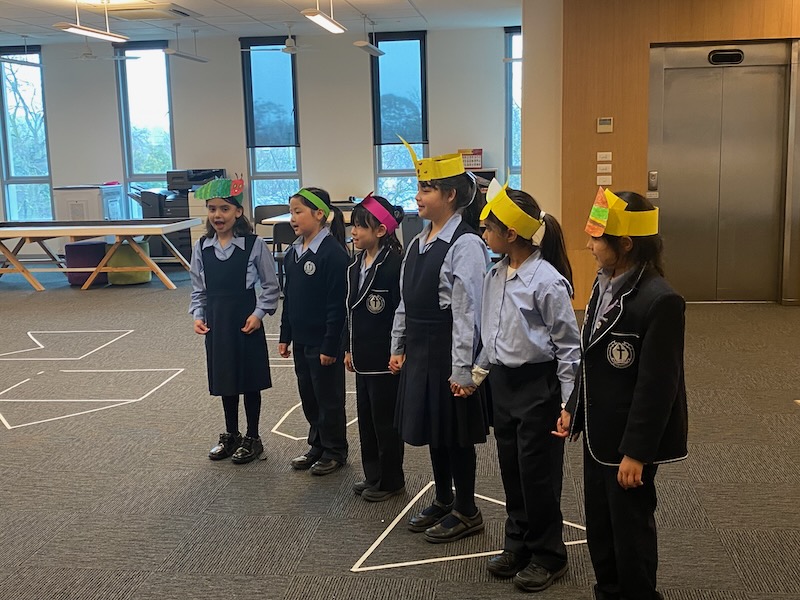

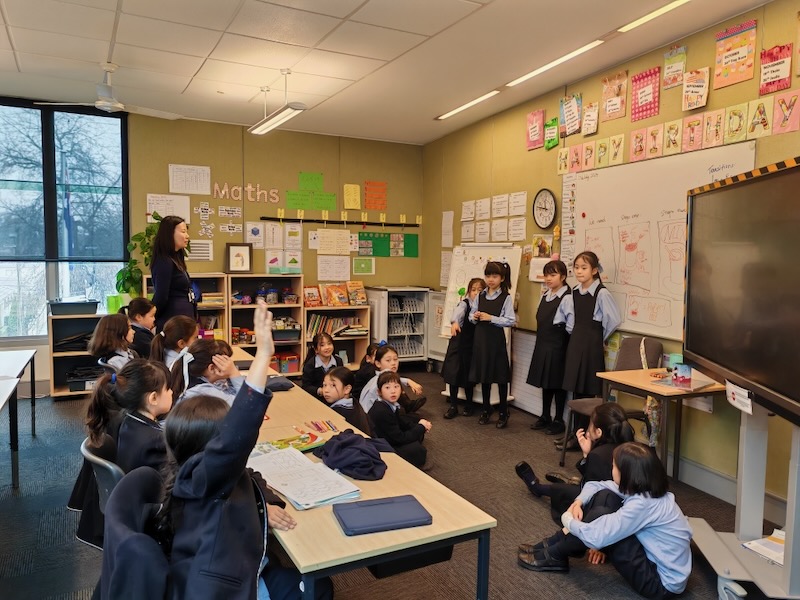


The Vocal Express Choir recently participated in the Kodály Victoria Junior Choral Festival at Carey Grammar. Over 200 students from a range of schools participated in a group singing and performance afternoon, hosted by choral conductor Mark O’Leary. In the singing warm-up students focused on following the conductor, musicianship skills and good quality singing. There was lots of fun interaction amongst the students, and the group singing was a highlight of the afternoon
The Vocal Express students had worked with focus during rehearsals with Ms Heron and Mr Mallis during the term, to prepare two contrasting pieces for the choral festival. Their performances were delivered with a beautiful choral sound and confident artistic intent. The students were also fortunate to listen to other schools perform in the supportive and friendly environment. Many thanks to Ms Heron and Mr Mallis for supporting the Vocal Express students to deliver their best at this event.
Kate Savige
Director of Music


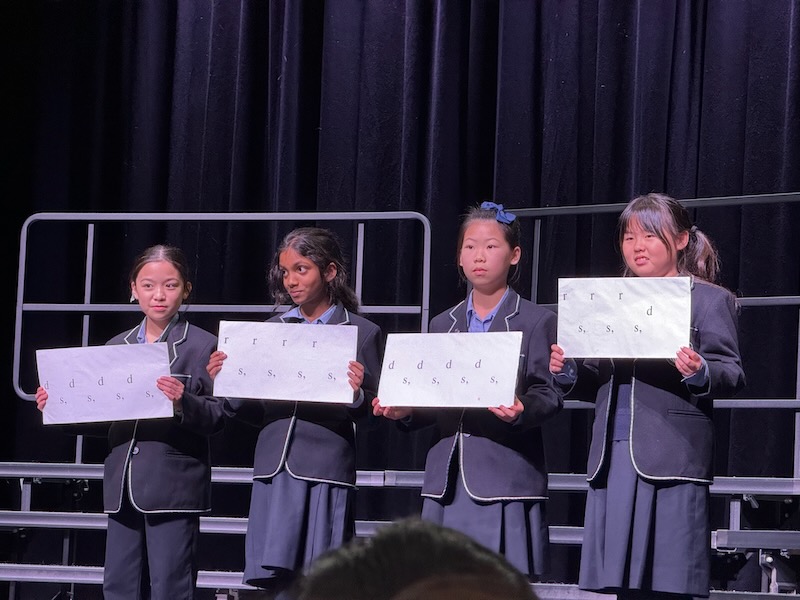
Today, School Chaplain Reverend Creed offers the community a reflection during this Advent season.
For our Year 6 students, their last few weeks at Junior School have been filled with celebrations!
The year has ended on a high note with the biggest event on the School’s calendar, Christmas at Camberwell, proving to be a huge success.

